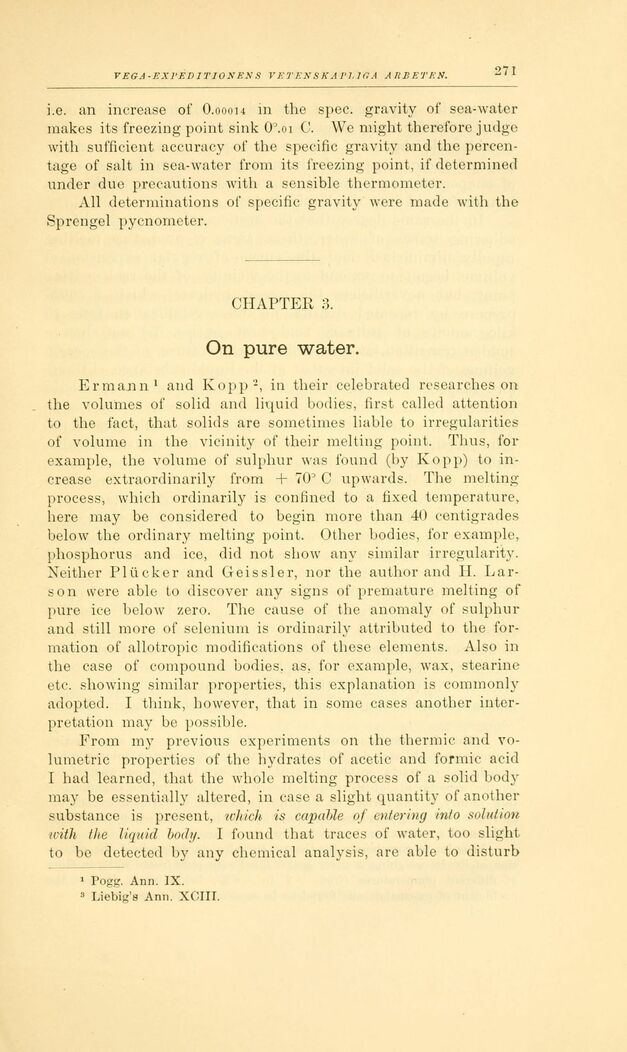
Full resolution (JPEG) - On this page / på denna sida - Sidor ...

<< prev. page << föreg. sida << >> nästa sida >> next page >>
Below is the raw OCR text
from the above scanned image.
Do you see an error? Proofread the page now!
Här nedan syns maskintolkade texten från faksimilbilden ovan.
Ser du något fel? Korrekturläs sidan nu!
This page has never been proofread. / Denna sida har aldrig korrekturlästs.
i.e. an increase of O.ooou in the spec, gravity of sea-water
makes its freezing point sink 0°.oi C. We might therefore judge
with sufficient accuracy of the specific gravity and the
percentage of salt in sea-water from its freezing point, if determined
under due precautions with a sensible thermometer.
All determinations of specific gravity were made with the
Sprengel pycnometer.
CHAPTER 3.
On pure water.
Ermajin 1 and Kopp2, in their celebrated researches on
the volumes of solid and liquid bodies, first called attention
to the fact, that solids are sometimes liable to irregularities
of volume in the vicinity of their melting point. Thus, for
example, the volume of sulphur was found (by Kopp) to
increase extraordinarily from + 70’ C upwards. The melting
process, which ordinarily is confined to a fixed temperature,
here may be considered to begin more than 40 centigrades
below the ordinary melting point. Other bodies, for example,
phosphorus and ice, did not show any similar irregularity.
Neither Plücker and Geissler, nor the author and H.
Larson were able to discover any signs of premature melting of
pure ice below zero. The cause of the anomaly of sulphur
and still more of selenium is ordinarily attributed to the
formation of allotropie modifications of these elements. Also in
the case of compound bodies, as, for example, wax, stearine
etc. showing similar propei’ties, this explanation is commonly
adopted. I think, however, that in some cases another
interpretation may be possible.
From my previous experiments on the thermic and
volumetric properties of the hydrates of acetic and formic acid
I had learned, that the whole melting process of a solid body
may be essentially altered, in case a slight quantity of another
substance is present, which is capable of entering into solution
with the liquid body. I found that traces of water, too slight
to be detected by any chemical analysis, are able to disturb
1 Pogg. Ann. IX.
8 Liebig’s Ann. XCIII.
<< prev. page << föreg. sida << >> nästa sida >> next page >>